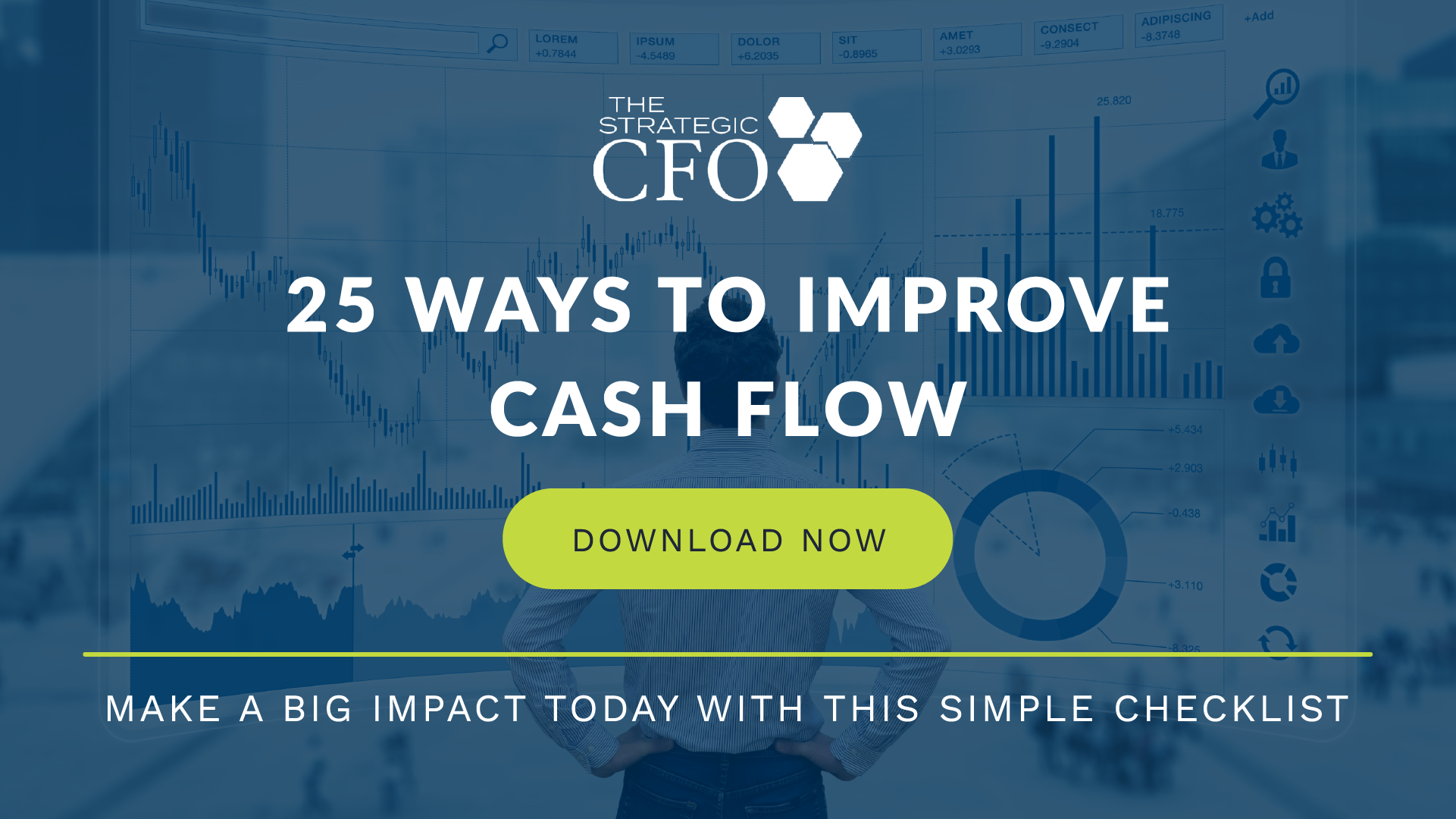Wouldn’t it be great if we had a guide for everything we do? A guide for marriage? A parenting guide? A guide to dealing with difficult times? Or maybe a CFO guide to understanding your CEO?
 Typically, Chief Executive Officers (CEOs) come from an operational or sales background. Naturally, Chief Financial Officers (CFO) do not always see eye to eye with their CEO. But over the past 25 years, The Strategic CFO has been working with CFOs to not elevate their status within companies, but also to make them more useful to the CEO… And therefore, more valuable to the entire company.
Typically, Chief Executive Officers (CEOs) come from an operational or sales background. Naturally, Chief Financial Officers (CFO) do not always see eye to eye with their CEO. But over the past 25 years, The Strategic CFO has been working with CFOs to not elevate their status within companies, but also to make them more useful to the CEO… And therefore, more valuable to the entire company.
What The CEO Wants to Know
Just like every person in a company looks at their own focus areas (finance, marketing, operations, etc.), the CEO needs to know specific things and can go without knowing other things. To improve the way the CEO sees and respects the CFO’s role and guidance, it is critical to know what they want, why they want it, and how to communicate with them effectively.
CFO Guide to Your CEO
The first step in our CFO guide is to understand how your CEO thinks.
1. Future, Not Past
The typical CEO is future oriented. What’s the next move? What are the company’s goals for this next quarter? The CEO acts as the visionary for the company – a pilot, a ship captain, a general. They look forward at the horizon, protecting the people behind them as they march forward. Therefore, instead of focusing on past records or past performance, make the future path clearer for the CEO. The future is more important than the past in the CEO’s role. But don’t neglect past performance’s value to the CEO. Past performance can help predict the future. Although the past is the past and nothing can be changed in the past, you can change the future and that’s what your CEO wants to know.
As the financial leader of your company, you may struggle with focusing on the future, as you have been trained for so long to justify and rationalize the past. One thing you should impress in your mind is that your CEO and other executives are laser-focused on the future. Use what you have recorded to display your vision of what lays ahead.
2. Know Your Numbers
One of the top things taught in business school is to know your numbers. What does “know your numbers” mean? Think about your unit economics. Go back to the basics. If your company sells 10,000 widgets at $1 in a month but your company is wanting to increase costs to $11,000, you should be able to immediately indicate that decision would not be wise as you will then be unprofitable.
Everyone in your company, especially the financial leader, needs to know the numbers of the company. Have the facts and data to support every claim, prediction, or forecast. If the CEO is relying on your financial expertise, you better be able to lead them forward financially. Know your numbers and how they impact your company in the short-term or long-term.
 3. Cash, Cash, Cash
3. Cash, Cash, Cash
Cash is king. To operate the company successfully, cash is absolutely critical. Whether you are paying down debt, keeping up with growth, or allowing for flexibility, you as the financial leader need to know exactly where you are with cash always.
[box] What happens when you need more cash or when you want to improve cash flow in your company? It’s difficult to know where to start. But you don’t have to guess anymore… Download the 25 Ways to Improve Cash Flow to start increasing the amount of cash in your business today! [/box]
4. Impact, Not Progress
You are painting a picture… The CEO doesn’t need to know the type of paint, the kind of paint brush, or the size of the canvas. But they do need to know the big picture and how it’s going to look after it’s finished. They don’t have enough time in the day to know all the details about progress; however, they do want the big picture updates on the impact of what is happening.
Remember, progress is still important. The managerial level needs to know the progress of projects. When you meet your CEO, have the project’s progress in the back of your mind in the case the CEO wants to know anything more specific.
Try to summarize all outcomes and updates on milestones concisely. Their high-level thinking does not need to be clouded by minute details and the nitty gritty of day-to-day operations. Sometimes details are necessary for the CEO to know when deciding the future of the company; so in that case, don’t hesitate to expand on the details.
What does impact mean?
Impact is defined as the “measure of the tangible and intangible effects (consequences) of one thing’s or entity’s action or influence upon another” (Business Dictionary). Think about it this way… Whether you are the CEO, COO, CFO, Controller, manager, community leader, a parent etc., you are responsible for people. Your worry should not be focused on the past but on how your decisions will impact people in the future. The CEO is responsible for everyone underneath him or her so a decision that will change the future for their employees, partners, stockholders, family, etc. is a big deal. Adjust your mindset from past performance to future impact.
5. Understand the Big Picture
Unfortunately, your CEO does not have all day to listen to you. The quicker you understand why your CEO acts the way they do and what they need to run the company successfully, the better you will be able to perform in your role as a financial leader. Align your goals/decisions/recommendations with the visions and priorities of the company.
For example, cash is tight but you want to get a software program that will report more timely and accurately the things you need to do your job. If you approached the conversation by trying to convince the decision maker (i.e. CEO) by sharing all the features, you will most likely get a “no”. But if you understand the big picture, communicate how this investment will serve you better long term versus the current software. Hint: Show some numbers of how this solution will improve cash flow, profitability, productivity, time, and money.
Conclusion
You should be your CEO’s partner, wingman, guide, confidant. Know what your CEO wants, thinks, and needs. To get started on improving your relationship with your CEO and to improve cash flow, download the 25 Ways To Improve Cash Flow whitepaper for free. Find other ways to improve your cash flow within 24 hours.

[box]Strategic CFO Lab Member Extra
Access your Projections Execution Plan in SCFO Lab. The step-by-step plan to get ahead of your cash flow.
Click here to access your Execution Plan. Not a Lab Member?
Click here to learn more about SCFO Labs[/box]











